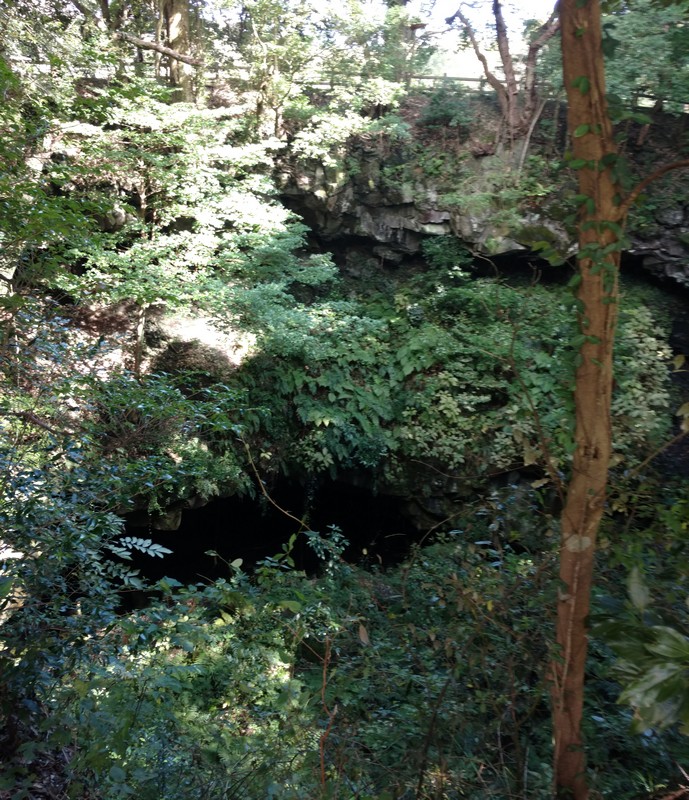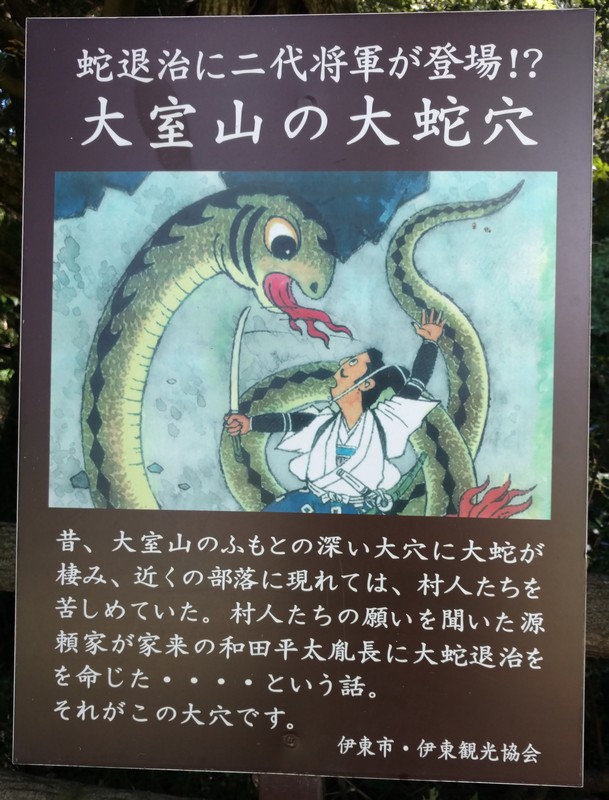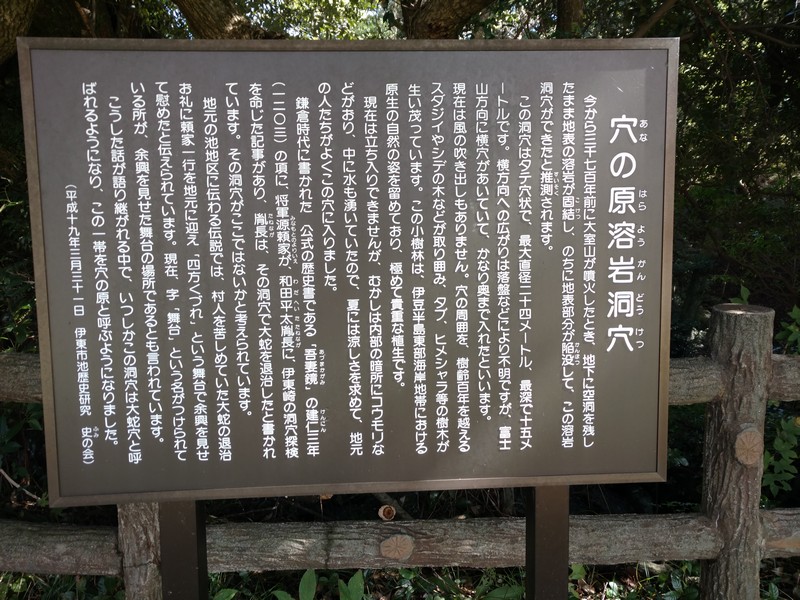Mt. Ōmuro Daija

At the bottom of the west slope of Mt. Ōmuro is a large, open pit. On the edge of the pit is a cave that goes deep into the volcano, probably a collapsed lava tube. Legend has it that a daija (giant snake) lived in this cave and frequently terrorized the villagers.
Yorie Minamoto, Japan’s second shogun, often visited Izu. After a bountiful day of hunting, he was in a good mood. Seeing this, the villagers implored him to kill the daija. Yorie Minamoto sent Heita Wada, his best guard to slay the beast.
The villagers guided Wada to the cave, and when their fear stopped them from going further, they pointed him toward the cave. Wada went deep into the cave, and when he finally encounted the daija, he thrust his sword full hilt into the snake’s neck. It collapsed in a great heap.
Wada cut off the head and took it to his lord, who expressed his great satisfaction and appreciation.
Yorie Minamoto ruled as Shogun from only 1202-03. He was assassinated at his villa in Shuzenji, in western Izu.


Today, a sign standing near the site of the cave reads:
Anohara Lava Tube
When Mt. Ōmuro erupted 3,700 years ago, the lava on the surface of the earth solidified, leaving an underground cavity, and later the surface part of the earth caved in to form this lava cave.
The cave is vertical, with a maximum diameter of 24 meters and a maximum depth of 15 meters. It is unclear how far the cave extends horizontally due to the rock fall, but it is said that there is a side hole in the direction of Mt. Ōmuro. There is no wind blowing out now. The hole is surrounded by sudajii (Japanese Cedar) and shidera (Japanese Cedar) trees that are over a hundred years old, as well as tabu and himeshara trees. This small forest retains the original natural form of the Izu Peninsula’s eastern coastline and is an extremely valuable vegetation.
Although it is currently inaccessible, in the past, bats and other insects were found in the dark places inside the cave, and there was a spring of water inside.
In the official history book “Azuma Kagami” written in the Kamakura period (1185-1333), there is an entry in which the shogun Minamoto no Yoriye ordered Wada Heita Inaga to explore the cave at Itozaki, and Inaga is thought to have found the cave here.
According to the local legend in the Ike area, Yoriyoshi and his party were welcomed to the area to thank them for killing the giant snake that was tormenting the villagers, and they were comforted by the entertainment on the stage called “Shimankuzure”. It is said that the place where the name “Butai” is given today is the location of the stage where the entertainment was shown. It is also said that the place where the character “Butai” is named today is the stage where the entertainment was performed. As these stories were handed down, the cave came to be known as the Giant Snake Cave, and the whole area was called Ananohara.
— (March 31, 2007, Ito City Pond History Research History Association)